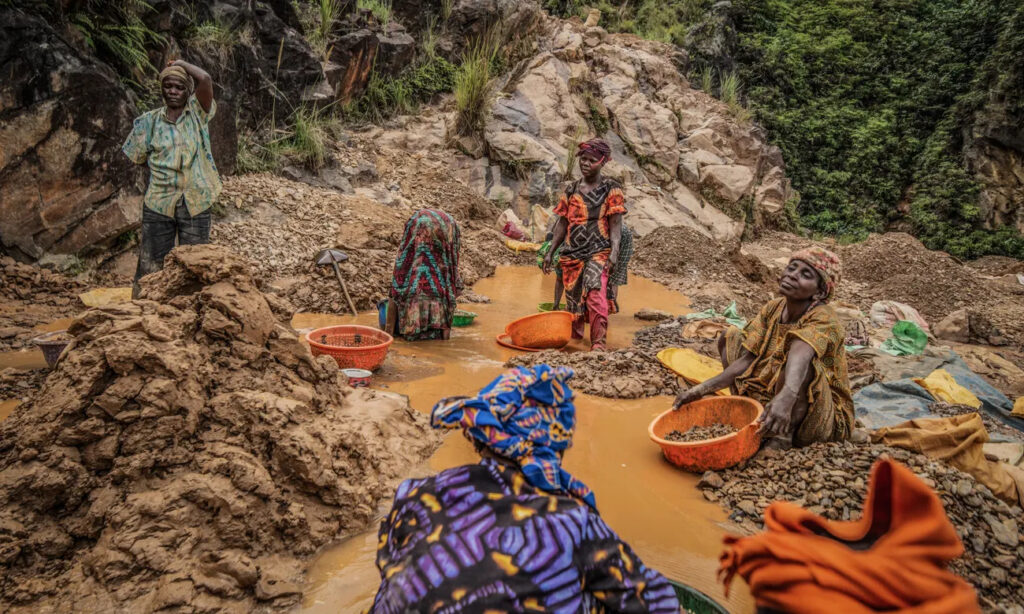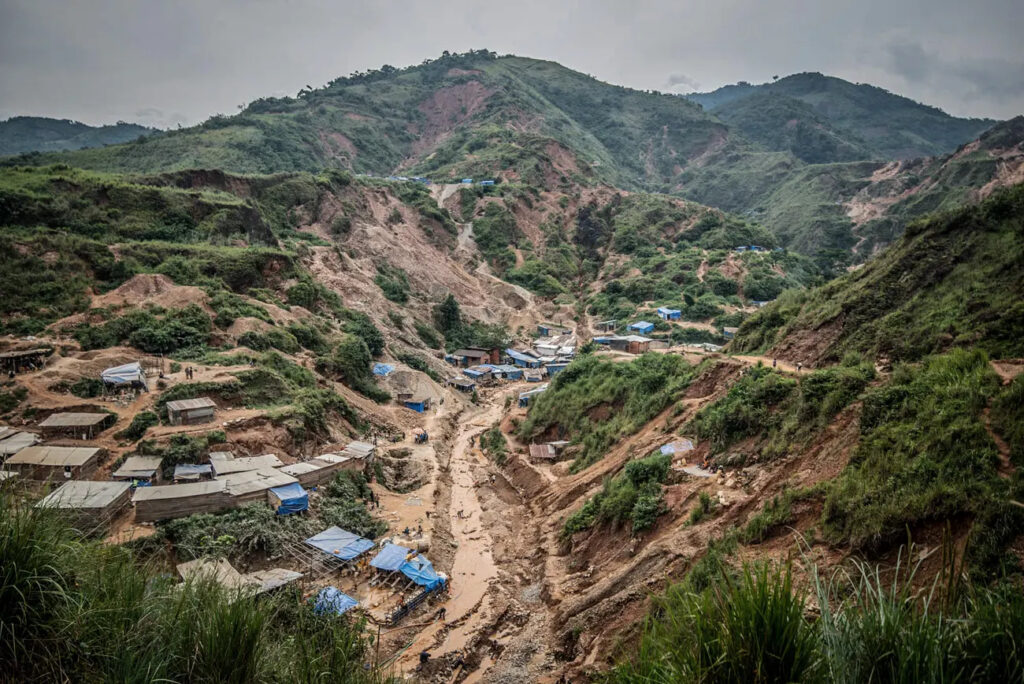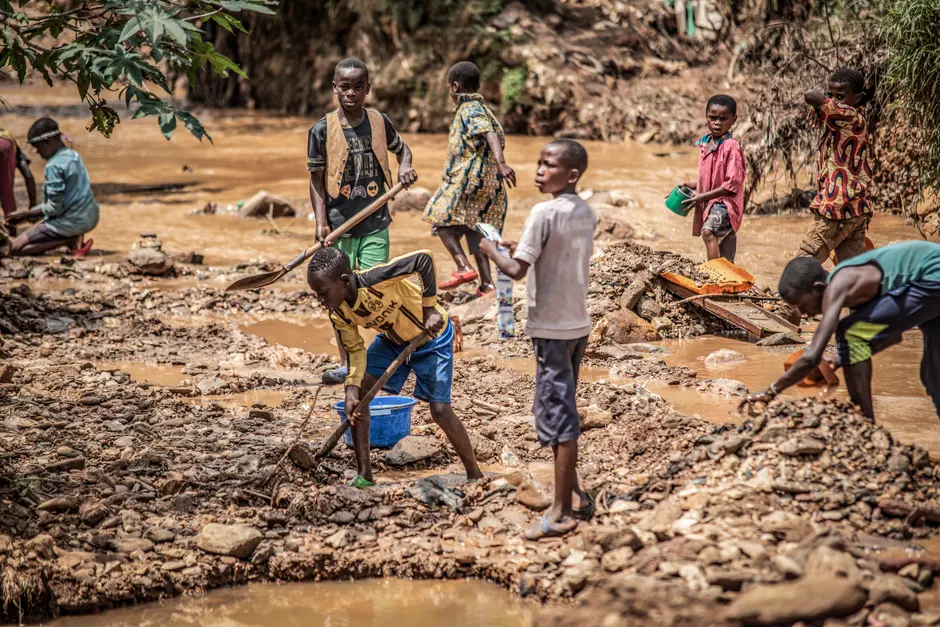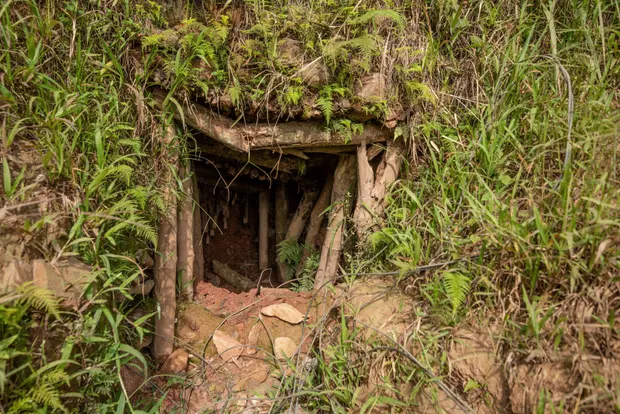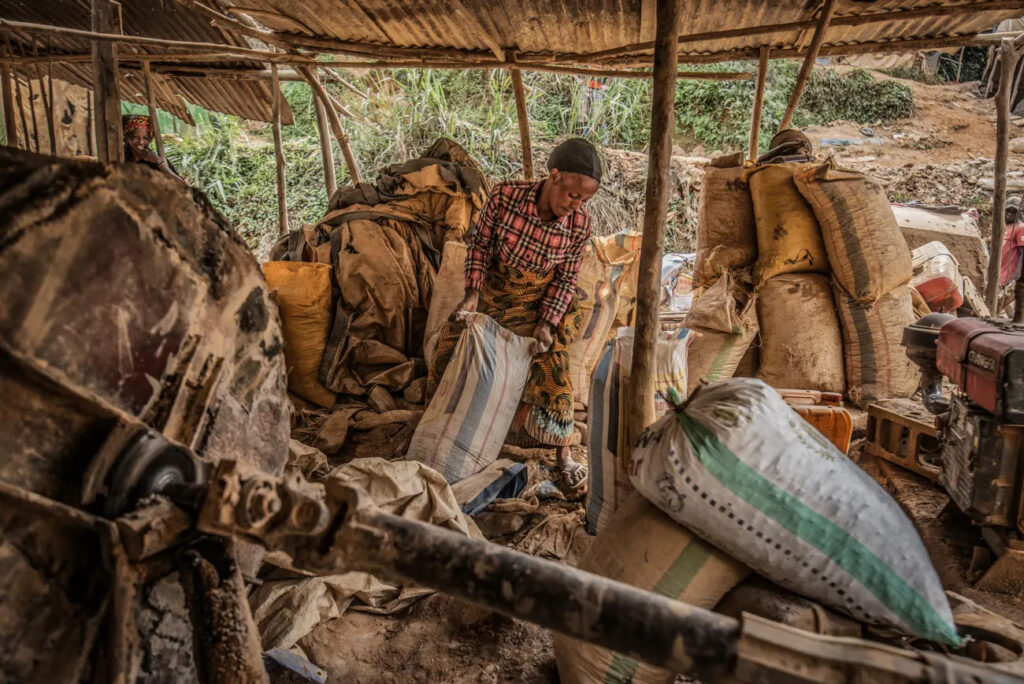Price of Gold: DRC’s Rich Soil Bears Few Riches for Its Miners – Photo Essay
EXPOSURES - EXPOSÉS, 24 May 2021
Moses Sawasawa | The Guardian – TRANSCEND Media Service
12 May 2021 – As the value of gold reached new heights last year, those mining it continued to face crippling deprivation and dangerous conditions.
The muddy slopes surrounding the eastern Congolese gold-mining town of Kamituga hold vast wealth and crippling deprivation.
In South Kivu province near the borders of Rwanda and Burundi, Kamituga has mineral resources estimated to be worth $24tn (£17tn) in untapped deposits. Yet the Democratic Republic of the Congo (DRC) has one of the lowest levels of GDP per capita in the world and people work in dangerous conditions with little hope of scratching out anything more than a meagre existence from tough and dangerous work.
This longstanding disparity has only grown as the coronavirus pandemic pushed up the global gold price to its highest value ever last August ($2,048 an ounce). Meanwhile, local prices offered from buyers in Africa went down, according to the Africa Report, reflecting the imbalance in an international supply chain that exploits poor workers at the source of wealth. Hundreds of thousands of people in South Kivu, including women and children, work in the informal mining sector, mostly in gold.
Artisanal subsistence mining is the informal, small-scale mining done independently by people not officially employed by a mining company, using their own resources, usually by hand. Roughly one-fifth of the global mineral supply is produced by these miners. In 2019, there were an estimated 10 million people working in the sector across sub-Saharan Africa.
Germany’s Federal Institute for Geosciences and Natural Resources estimates DRC’s artisanal gold production to be 14 to 20 tonnes a year, with a value of $543m to $812m.
The miners face plenty of risks excavating the gold – 50 mostly young people died in a mine collapse at Kamituga last September – while health care and education for children is virtually nonexistent. Heavy metals such as mercury, which is used to separate gold particles from mud, can seep into the water table and food chain. And with much of the local population working in the mines, it makes for a labour shortage in the fields, so crops become scarce and food prices and malnutrition rise.
While DRC law bans child labour, children can be seen digging through the red mud of Kamituga’s rivers.
“Some children here work in the mines every day, working several hours at a time,” Idi Kyalondwana, who works for a mining co-operative, told France 24 after a visit to Kamituga in February. “Some actually go down into shafts that are several hundred metres deep and tunnels to dig for gold without any safety measures. It’s incredibly dangerous. There are often cave-ins.”
Gold mining also feeds into interlocking conflicts, shrouded in various forms of illicit trading. A recent Impact report documents how registered traders and exporters provide a veneer of legality by declaring a small percentage of their gold exports while pocketing huge profits and avoiding official taxes from illicit trade. This means that the gold smuggled out of DRC which flows on to the legal international gold market is tied to criminality, money laundering, armed groups and human rights abuses, according to the report.
TO CONTINUE READING THE ESSAY Go to Original – theguardian.com
Tags: Africa, Child labor, D.R. Congo, DRC, Exploitation, Gold mining, Inequality, Poverty, Predatory Capitalism, Savage Capitalism, Slave labor
DISCLAIMER: The statements, views and opinions expressed in pieces republished here are solely those of the authors and do not necessarily represent those of TMS. In accordance with title 17 U.S.C. section 107, this material is distributed without profit to those who have expressed a prior interest in receiving the included information for research and educational purposes. TMS has no affiliation whatsoever with the originator of this article nor is TMS endorsed or sponsored by the originator. “GO TO ORIGINAL” links are provided as a convenience to our readers and allow for verification of authenticity. However, as originating pages are often updated by their originating host sites, the versions posted may not match the versions our readers view when clicking the “GO TO ORIGINAL” links. This site contains copyrighted material the use of which has not always been specifically authorized by the copyright owner. We are making such material available in our efforts to advance understanding of environmental, political, human rights, economic, democracy, scientific, and social justice issues, etc. We believe this constitutes a ‘fair use’ of any such copyrighted material as provided for in section 107 of the US Copyright Law. In accordance with Title 17 U.S.C. Section 107, the material on this site is distributed without profit to those who have expressed a prior interest in receiving the included information for research and educational purposes. For more information go to: http://www.law.cornell.edu/uscode/17/107.shtml. If you wish to use copyrighted material from this site for purposes of your own that go beyond ‘fair use’, you must obtain permission from the copyright owner.
Read more
Click here to go to the current weekly digest or pick another article:
EXPOSURES - EXPOSÉS:
